Galleries
Pedro Wirz on Drunk Horses and His First New York Show
The emerging artist addressed his work and influences.
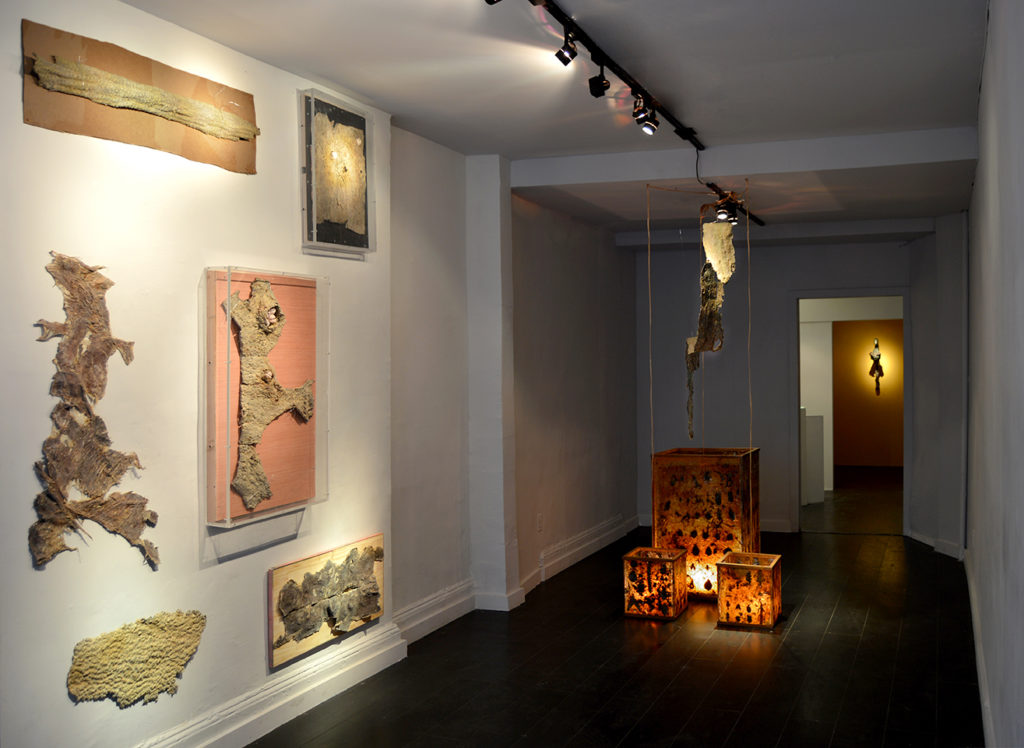
The emerging artist addressed his work and influences.

Paintings by Gabriel Lima still hang on the walls of Kai Matsumiya’s gallery on New York City’s Lower East Side as preparations for the opening of Pedro Wirz‘s exhibition, “The Horse Who Drank Beer,” were underway in the long, narrow, and dimly-lit space. The exhibition, which opened on April 24, will remain on view until June 5.
The Brazilian and Swiss artist is visibly excited about his New York debut as he returns from the back room with two of his works. “Nobody has seen these except for me, Kai and a friend,” he says as he unpacks a large piece of tree bark that he’s coated in latex.
Wirz speaks in an international accent that’s hard to place, and it reflects the Brazilian-born artist’s childhood spent in the rural municipality of Pindamonhangaba, Brazil, and his studies pursued at the Academy of Fine Arts in Basel, and at the Staatliche Akademie der Bildenden Künste in Stuttgart. It’s a mishmash of Portuguese, Swiss German, and American English.
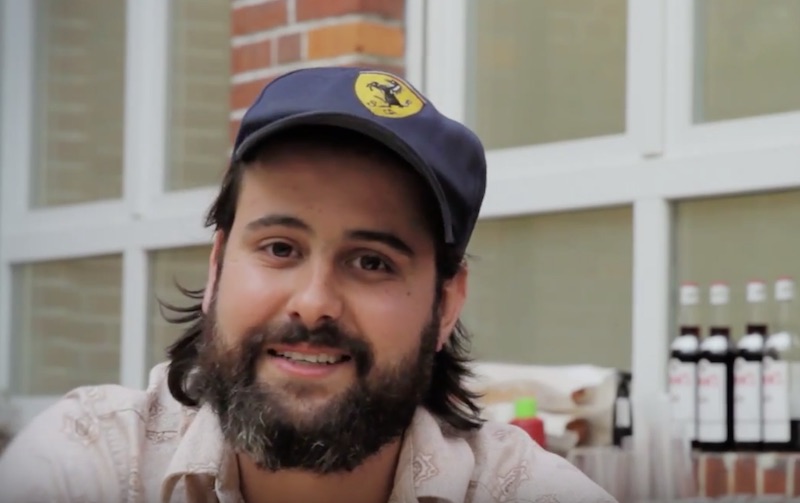
Pedro Wirz
Photo: Video still via YouTube
We’re interrupted by the arrival of the influential art advisor and collector Thea Westreich and her husband Ethan Wagner, who have stepped into the gallery to visit dealer Kai Matsumiya. Westreich comments on the unique characteristics of Wirz’s latex-wrapped bark works, fascinated by the surface’s unique texture, she can’t resist touching the artwork.
Ten days later, at the show’s opening, a cool international crowd has gathered in the intimate gallery. Austrian artist Rainer Ganahl is in attendance; he’s Wirz’s professor from Stuttgart’s State Academy of Fine Art, and is a major influence on Wirz’s work. A man claiming to be on the run from Germany’s intelligence service, the BND, for conspiring to help Bavaria gain independence from the Federal Republic turns out to be the American artist Peter Fend.
It’s a strange concoction of people, but it all somehow fits into Wirz’s work, which blends elements of myths and legends to investigate global cross-cultural similarities. It’s a new direction for the artist and a marked departure from his earlier, deeply collaborative approach, which was characterized by a show at the Kunsthalle Dortmund in 2014 where Wirz asked the curatorial panel to fill out a questionnaire describing their ideal artwork. Wirz subsequently hired craftsmen from his Brazilian hometown to fabricate all the works based on the descriptions.
The artist spoke to artnet News about his influences, his first New York show, and the origins of the exhibition’s unusual title.

Installation view of The Horse Who Drank Beer at Kai Matsumiya gallery. Courtesy Kai Matsumiya, New York.
You’ve moved around a lot during your career.
I was born in São Paulo and I actually studied public relations, which is related to communications, which in the beginning was a very important aspect of my practice—bringing people together and doing these collaborative works. But then later I moved to Switzerland to study art, I also spent time in France so I had a whole background before I learned German to be able to go to the school.
I studied in Basel at the Academy of Fine Arts; I took classes learning sculpture and performance, and then I did this Erasmus in Stuttgart with Brigit Brenner, Christian Jankowski, and Rainer Ganahl. [Jankowski] was very important to bring [in] humor, and this is for me also a very important aspect of the work.
How has your collaborative approach to art changed?
The core is still the same, it has to do with relations… But now I’m doing it the inverse way. Before I was giving people information to produce work, and now I’m more collecting information in terms of me producing work.
The residence I’m doing right now at the Swiss Institute [in Rome] also has a lot to do with it because there I have all the support to only be in the studio. There is a chef cooking everyday for the artists, you have a beautiful room to live in, and you have this fantastic studio—it’s ridiculous. I’m so happy.
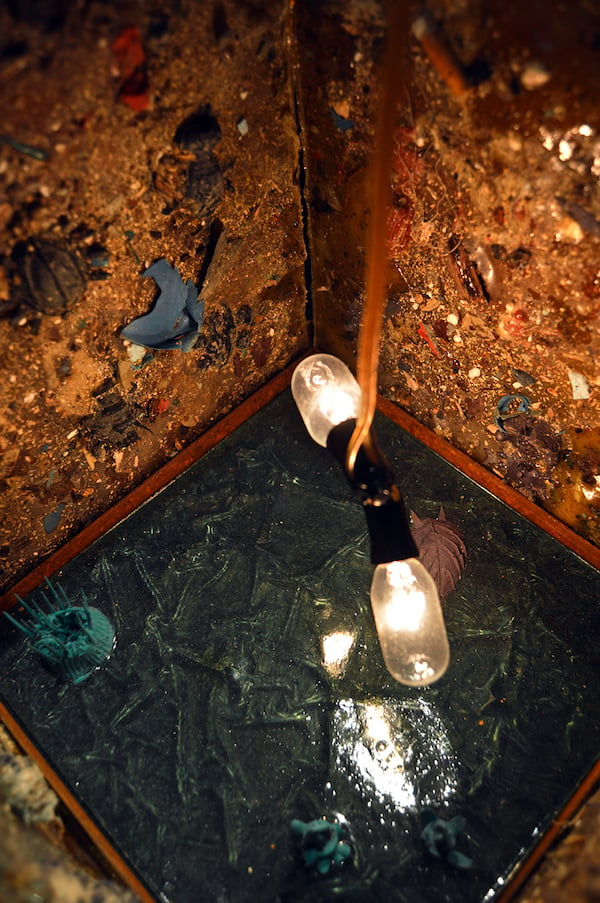
Pedro Wirz Spring Drought (2016). Courtesy of Pedro Wirz, courtesy Kai Matsumiya, New York.
How does your upbringing in Brazil and Switzerland come together in your work?
I grew up in a tiny little city in Brazil. My parents are hippies, biologist and engineer of the fields so I literally grew up learning all the names of the plants, the flowers, the little bugs, and was taught to never kill, not even an ant. [I have] that kind of relationship to nature.
But finally I moved to Switzerland as a coincidence almost because I had the passport through my father and had the opportunity to go. At first I wanted to be a photographer, but being there and living there I realized that what I actually wanted to do was sculpture and imagery in a much more wide range.
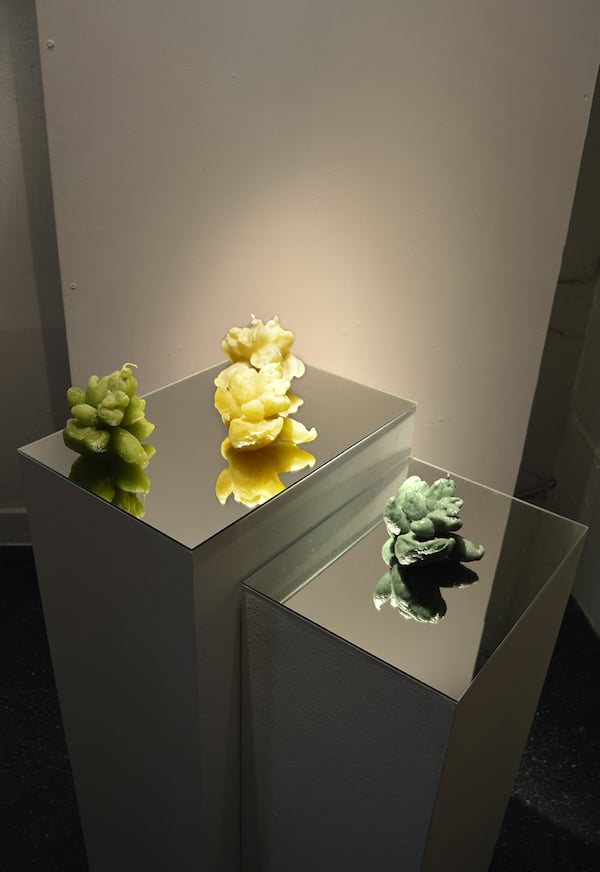
Pedro Wirz Mentira Caipira (2016). Courtesy of Pedro Wirz, courtesy Kai Matsumiya, New York.
Can you speak more about your use of materials?
It’s bark. Tree bark coated in acrylic paint. It was always close, the relationship to natural material, although I don’t see myself as a Brazilian nature artist at all. It’s more the case that the the material and the context really interest me right now.
Is it more of a subconscious aspect of your work that articulates itself?
Exactly, exactly. It just kind of happened because I couldn’t run from it. And I only realized it just now in the last two years. Actually, they are a representation of a much larger story that also has a relationship to life—small mythologies that don’t have roots in one specific place. They repeat themselves everywhere.
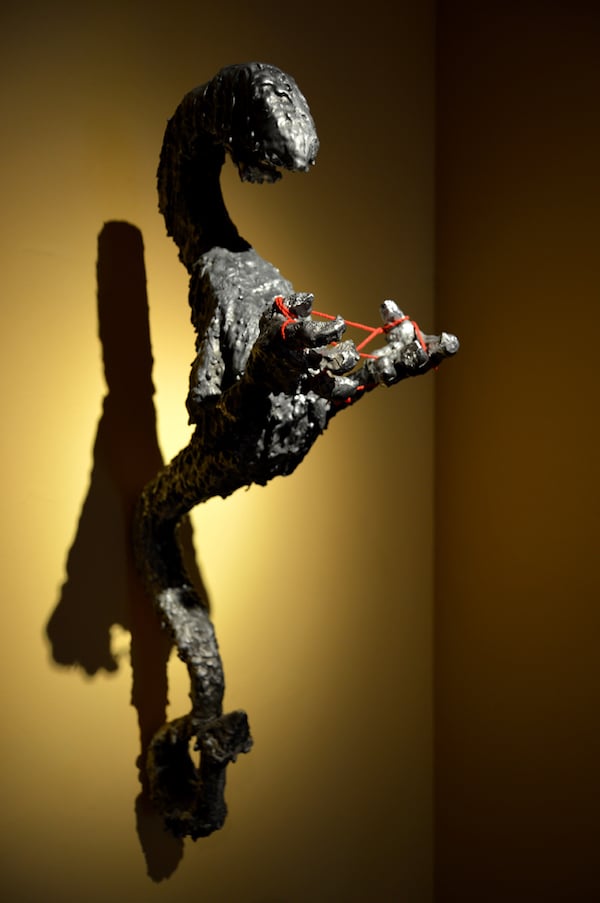
Pedro Wirz Cat’s Cradle (2016). Courtesy of Pedro Wirz, courtesy Kai Matsumiya, New York.
The title of the show, “The Horse Who Drank Beer,” is curious. Can you tell us more?
It relates to a story that I’m reading at the moment by a very well-known Brazilian writer called João Guimarães Rosa. I think the story is really sad. It’s about an Italian man that moves to Brazil and nobody knows what he does. He lives alone in a large house, and has planted a lot of trees so nobody knows what he’s doing, he’s always there alone.
He has one man that works for him that hates him because he’s rich, he’s such a pig, and he looks weird, he looks bad. And he always thinks the Italian is a bad person. Following the death of his mother, the Italian asked this worker if he can bring him beer for his horse. The employee thinks its ridiculous: “He’s an alcoholic, he’s always drinking.” And at some point, inspectors come to his house to see what the mysterious man is getting up to. The employee sees the opportunity to take revenge against him, even though the Italian never did anything against him.
He takes the police inside his house hoping to find a little dirt on his employer, he’s hoping to find any kind of advice that he’s a bad guy. But the house is completely empty, and in one room there’s a beautiful white taxidermy horse. It turns out that he’s got other horses too, and one of them loves beer, he drinks beer all the time. Then the employee realizes that he is in fact the bad guy and that the Italian is a totally lovely person. The story relates to prejudices and illustrates to narratives that we create.
This interview has been edited and condensed.
“The Horse Who Drank Beer” runs through June 5, 2016 at Kai Matsumiya, New York.